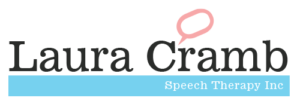Every child has a unique journey when it comes to communication. For nonverbal children, connecting with others and expressing themselves may require extra support, but there are so many ways to help them find their voice. Tools like AAC (Augmentative and Alternative Communication) devices, gestures, and other tailored strategies provide effective pathways for meaningful communication. Here, we’ll explore some ways to empower nonverbal children to build their communication skills and feel confident in expressing themselves.
Start with Basic Gestures and Signs
- Why It Matters: Simple gestures, like waving, pointing, or nodding, are often the first building blocks of communication. For nonverbal children, learning these movements provides a way to convey basic needs, emotions, and responses.
- How to Implement: Make a routine of using gestures consistently throughout the day. For example, point to objects during playtime, wave hello and goodbye, and use simple hand signs to indicate feelings or requests (e.g., thumbs up for “good job” or open hand for “stop”).
2. Use Visual Supports and Picture Boards
- Why It Matters: Visual aids such as picture boards, flashcards, and daily schedules help children associate words with images, simplifying the communication process. They also help reduce frustration by offering choices in a visual format.
- How to Implement: Start with a picture board that includes images of daily essentials—food, toys, and people they interact with regularly. Encourage the child to point to a picture to make requests or express needs, gradually increasing the variety of images as they grow more comfortable.
3. Introduce AAC (Augmentative and Alternative Communication) Devices
- Why It Matters: AAC devices, such as tablets with communication apps, allow nonverbal children to communicate using symbols, text, or even synthesised speech. These devices help bridge the communication gap, providing a voice and a way for children to express more complex thoughts.
- How to Implement: Choose an AAC device based on the child’s needs and abilities. Some devices allow children to tap on pictures that translate into spoken words, while others use more advanced touch or eye-tracking technology. Work with a speech therapist to set up the device and provide regular practice time to help the child learn to use it effectively.
4. Encourage Social Interaction in Safe Environments
- Why It Matters: Practicing communication skills in social settings helps nonverbal children build confidence and learn to interpret social cues. Finding a safe, supportive environment allows them to explore new ways of expressing themselves.
- How to Implement: Arrange playdates with understanding peers, and join group activities where children can watch others and practice their own communication skills in a comfortable setting. Praise and encourage all forms of communication, whether it’s a hand gesture, smile, or use of an AAC device.
5. Practice ‘Shared Attention’ with Interactive Play
- Why It Matters: Shared attention, or the ability to focus on a task or object alongside another person, is a core component of communication. When a child engages with a toy, book, or activity alongside an adult, they’re building foundational skills for two-way interaction.
- How to Implement: Pick interactive activities, such as reading a picture book together, rolling a ball back and forth, or exploring sensory toys. Encourage the child to “show” you what they find interesting. Respond with gestures, smiles, or words, letting them know you’re engaged in what they’re experiencing.
6. Be Patient and Consistent
- Why It Matters: Communication progress varies for each child, and developing these skills takes time. Nonverbal children benefit from consistent routines, patience, and a steady pace that helps them feel understood and supported.
- How to Implement: Set up a daily routine that includes consistent use of gestures, picture boards, or AAC devices. Celebrate small milestones and stay positive, reinforcing the idea that every step forward, no matter how small, is significant.
7. Collaborate with Speech Therapists and Other Professionals
- Why It Matters: Speech therapists and professionals can offer expert guidance tailored to a child’s unique needs. They can also provide strategies for parents to use at home, maximising the benefits of each session.
- How to Implement: Work closely with a speech therapist to develop a communication plan that aligns with your child’s developmental stage and goals. Therapists can suggest personalized activities and help you understand the most effective tools for encouraging communication skills.
Embracing Each Step Forward
The journey toward communication is different for every child, but with the right tools, patience, and love, nonverbal children can express themselves meaningfully and connect with the world around them. Whether through gestures, pictures, or advanced AAC devices, these approaches create pathways for your child to communicate, be heard, and feel valued. Every moment spent encouraging communication builds a foundation for lifelong connection and understanding, showing nonverbal children that they, too, have a voice that matters.




